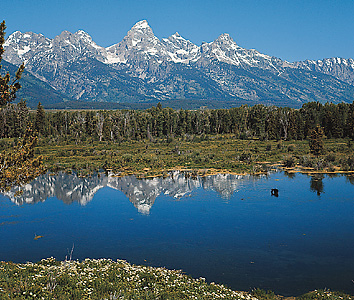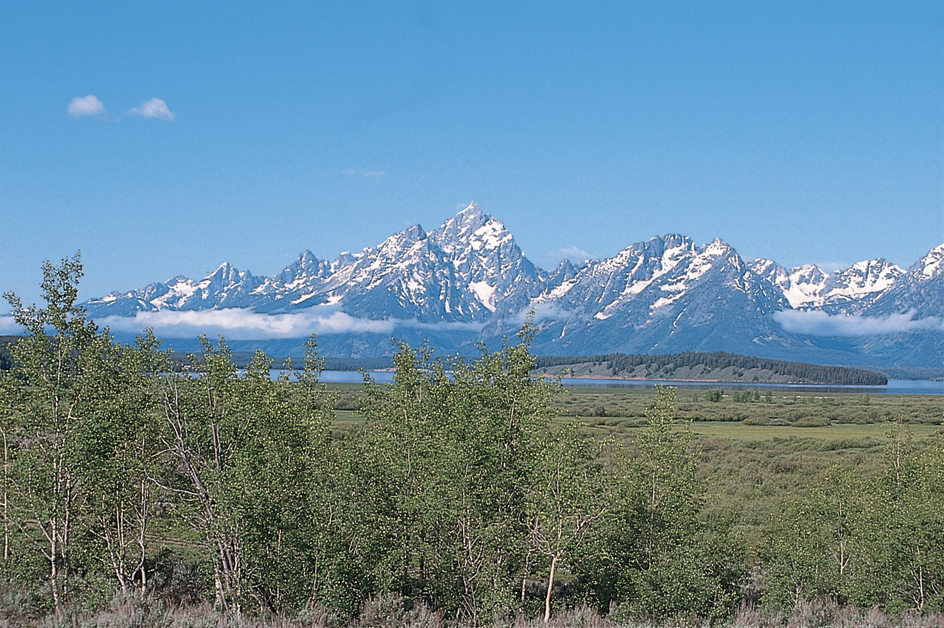Jackson Hole is a flat, scenic valley that lies between the peaks of the Teton and Gros Ventre ranges in western Wyoming , in the Rocky Mountains region of the United States. The town of Jackson—itself sometimes also called Jackson Hole—lies at the southern end of the valley. The town serves as a gateway to the nearby attractions of Grand Teton National Park and Yellowstone National Park.

The jagged, picturesque Teton Mountains rise sharply more than 1 mile (1.6 kilometers) from the valley floor. The Tetons began to form about 10 million years ago, when underground pressure caused two blocks of Earth’s crust to shift. One block pushed upward to form the Teton Range, while the other block sank to form Jackson Hole. This shifting took place over millions of years. Over the last few hundred thousand years, glaciers carved many of the Teton peaks and helped to shape the valley floor.
Scientists have found spear and arrow points suggesting the presence of indigenous groups in the Jackson Hole region as many as 11,000 years ago. Native American peoples who established trails and campsites in the area during the last several hundred years include the Shoshone, Crow, Bannock, Blackfoot, and Nez Perce. In the winter of 1807 to 1808, a fur trapper named John Colter probably became the first nonnative person to explore the Jackson Hole region. A year earlier, Colter had traveled in the Northern Rocky Mountains with the Lewis and Clark expedition. The trapper David Jackson camped near Jackson Lake in the late 1820’s. To trappers in the West, a hole was a high valley surrounded by mountains. In 1829, one of Jackson’s colleagues began to call the valley “Jackson’s Hole.”
About 1870, the discovery of gold deposits led to a minor prospecting boom in the region. In 1872, the U.S. Congress established Yellowstone National Park to the north of Jackson Hole. Settlers began to build a community in the valley around 1884. Jackson was incorporated as a town in 1914. Grand Teton National Park was created in 1929 and enlarged in 1950. By the late 1930’s, the Jackson Hole area began to gain a reputation as a skiing destination. In warmer months, visitors enjoy such activities as fishing, rafting the Snake River, hiking, and horseback riding. Such attractions as the National Museum of Wildlife Art, the Jackson Hole Historical Society and Museum, and the National Elk Refuge also draw many visitors.

